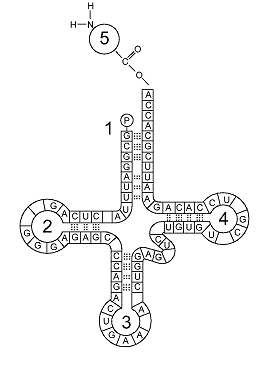All eukaryotes contain
A) a membrane-enclosed nucleus.
B) mitochondria.
C) hydrogenosomes.
D) a nucleus, mitochondria, and hydrogenosomes
Answer: A
You might also like to view...
An essential amino acid or fatty acid is _____
a. needed in large amounts by the body b. dispensable c. not synthesized by the body d. an essential component of digestive enzymes e. required daily
Chronically high blood pressure is called
a. ventricular fibrillation. b. hypertension. c. leukemia. d. sickle-cell anemia. e. a stroke
The unicellular alga Chlamydomonas
a. lacks an asexual stage. b. lacks a sexual stage. c. lacks a haploid and a diploid phase. d. possesses both a haploid and a diploid phase. e. produces thick-walled resistant spores.
Refer to Figure 13-2. The portion of the molecule labeled 5 is:

a. the attached amino acid.
b. a double-stranded region.
c. a single-stranded region.
d. the anticodon.
e. the codon.